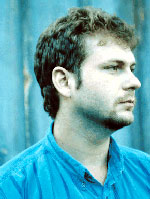Once again, I greatly enjoyed this year's ESRI Federal User Conference - I was able to make it to several sessions Thursday and Friday... Perhaps will post more on this, as time permits.
As he has done before, Jack Dangermond solicited feedback and questions in his FedUC wrapup following Recovery Accountability and Transparency Board chairman Earl E. Devaney's excellent talk - I was happy to pitch in and asked him my own question about ESRI's vision for volunteered geographic information / crowdsourcing / participatory GIS...
This got Jack Dangermond excited, it seems he has been thinking about the concept, though even with his response, we need to get beyond the initial technical hurdles - and in talking to some other ESRI folks during and after the conference, I am happy to hear that some other ESRI staffers are thinking about this as well.
The thing is this: It's not really about ESRI tools importing OpenStreetMap, GeoRSS or Twitter feeds, and so on. Mere import and merge with your own data is really just a tiny part of it.

The true power of VGI is in its dynamic nature - for example, in the case of Haiti response, there were dozens of volunteers all providing concurrent updates, imports and edits to OpenStreetMap, as well as hundreds consuming the map data. The state of the map changed, sometimes radically, from hour to hour, and often even from minute to minute. As one example, an individual on the ground in Haiti sent an SMS message to Ushahidi with GPS coordinates for two locales where supplies could be airdropped or landed via improvised helicopter landing zone. The maps were blank in those two areas. Yet, within minutes, I and other OSM mappers pulled up the declassified DMA maps, DigitalGlobe and other imagery that had been donated by various providers, and sketched in the roads, trails, streams, buildings and other culture and planimetrics for those communities in need.
Leveraging those dynamic updates is one key piece to making the most of VGI. That means, going beyond import, to being able to consume and integrate the data on the fly.
The second piece is that VGI is not a one-way street. To use Haiti again as an example, dozens of disparate agencies are all using OpenStreetMap - several are in turn actively contributing back as well. Each is then building up on the work of the others, and the efforts of each resource leverages successive investments of the prior effort. This is particularly useful for resource-constrained organizations and volunteer efforts. As an example of this, as a member of Engineers Without Borders, I have been trying to promote adoption of OpenStreetMap for mapping efforts - e.g. one effort providing potable water can then dovetail into another organization's efforts to do health assessments, and so on.
As to cultural and organizational resistance to crowdsourcing, accuracy and reliability - that can be handled via record-level metadata. The double-edged sword of OpenStreetMap is in its use of key/value pairs for attribute data, as opposed to rigidly structured tables and columns, which on one hand can lead to folksonomies with inconsistent tagging, but on the other hand can handle rapid, flexible, ad-hoc changes to accomodate new needs, as well as allow complex representations via a collection of tags - which in turn can then also be cross-walked to other agencies' data models for interaction and ETL. While OpenStreetMap, on its' face, leaves much up to the individual contributors, best practices can and should be implemented. All edits are tracked in OpenStreetMap, which provides some basic metadata as to who and when, however more robust means of reverting adverse changes would be useful. Similarly, best practices are generally communicated via wiki, such as adding tags for source (e.g. digitized from DigitalGlobe imagery, with date). One of my comments in my followup to Jack Dangermond was that some of the governance/user guidance can be put directly into the tools, such as via JOSM, Merkaartor or Potlatch presets and templates.
Some may push back and suggest that shared community platforms like OpenStreetMap lack accuracy or reliability. The beauty of it is that if you don't like it, you can fix it.
And another goal... Dynamic integration of community platforms like OpenStreetMap beyond just base mapping and visualization, to be incorporated into modeling and analysis, via crosswalks and semantic interoperability.
I am happy to see this is something of interest to Jack Dangermond and ESRI, and hope that the bidirectionality and dynamic nature of VGI are fully embraced down the road.




Good summary. Thank you.
I am pleased to hear about Volunteered Geographic Information and and community mapping, and that this was discussed at the ESRI conference.
As far as I see it, this is the big shift in the GIS world - form the IT tools (the HOW) to the WHAT, most and importantly, the WHY (do we do it) - i.e. how is GIS making a difference.
I have been involved in GIS Professionally for 10 years, the most rewarding project I was involved with was rainforest conservation with a community focus: http://www.geoenabling.com
Worthwhile is any GIS'r our there want to help: http://www.geoenable.info
Thank you for the article. Now I fully understand, why OSM has been in the topics lately.
VGI responds to the speed of changing environment. For example, if there is a traffic accident, people send GPS data to OSM, and other cars can prepare to take another route. And of course VGI in Haiti proofed to be powerful.
A very good read indeed. Thank you for sharing.